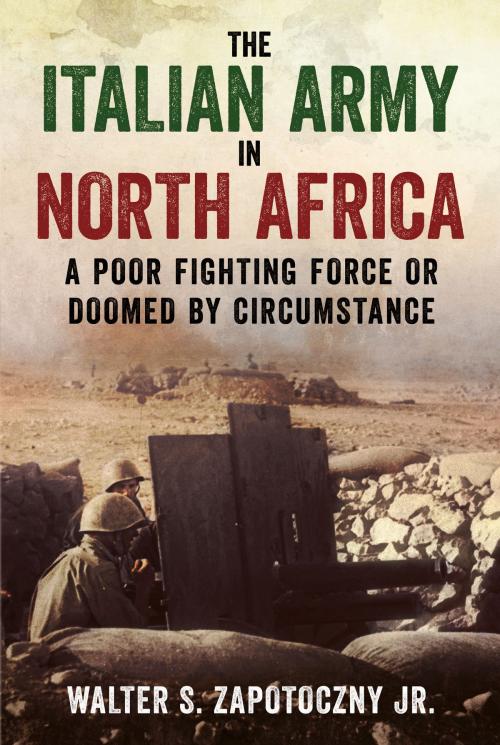The Italian Army in North Africa
A Poor Fighting Force or Doomed by Circumstance
Nonfiction, History, Military, Strategy, World War II| Author: | Walter S. Zapotoczny Jr. | ISBN: | 1230002544991 |
| Publisher: | Fonthill Media | Publication: | September 12, 2018 |
| Imprint: | Language: | English |
| Author: | Walter S. Zapotoczny Jr. |
| ISBN: | 1230002544991 |
| Publisher: | Fonthill Media |
| Publication: | September 12, 2018 |
| Imprint: | |
| Language: | English |
- Previously unpublished analysis of why and how the Italians fought
- A look at the role the Italian Army played in North Africa as part of the Deutsches Afrika Korps (German Afrika Korps)
- In spite of poor leadership, the Italian soldier performed well against all odds in North Africa
- Profusely illustrated with many rare and unpublished images
‘The German soldier has impressed the world, however, the Italian Bersagliere soldier has impressed the German soldier.’ Erin Rommel aka ‘The Desert Fox’
When most people think of the Italian Army in North Africa during the Second World War, they tend to believe that the average Italian soldier offered little resistance to the Allies before surrendering.
Many suggest that the Italian Army performed in a cowardly manner during the war: the reality is not so simple. The question remains as to whether the Italians were cowards or victims of circumstance.
While the Italian soldier’s commitment to the war was not as great as that of his German counterpart, many Italians fought bravely.
The Italian Littorio and Ariete Divisions earned Allied admiration at Tobruk, Gazala and EI Alamein.
The Italian Army played a significant role as part of the German Afrika Korps and made up a large portion of the Axis combat power in North Africa during 1941 and 1942.
In the interest of determining how the Italian Army earned the reputation that it did, it is necessary to analyse why and how the Italians fought.
- Previously unpublished analysis of why and how the Italians fought
- A look at the role the Italian Army played in North Africa as part of the Deutsches Afrika Korps (German Afrika Korps)
- In spite of poor leadership, the Italian soldier performed well against all odds in North Africa
- Profusely illustrated with many rare and unpublished images
‘The German soldier has impressed the world, however, the Italian Bersagliere soldier has impressed the German soldier.’ Erin Rommel aka ‘The Desert Fox’
When most people think of the Italian Army in North Africa during the Second World War, they tend to believe that the average Italian soldier offered little resistance to the Allies before surrendering.
Many suggest that the Italian Army performed in a cowardly manner during the war: the reality is not so simple. The question remains as to whether the Italians were cowards or victims of circumstance.
While the Italian soldier’s commitment to the war was not as great as that of his German counterpart, many Italians fought bravely.
The Italian Littorio and Ariete Divisions earned Allied admiration at Tobruk, Gazala and EI Alamein.
The Italian Army played a significant role as part of the German Afrika Korps and made up a large portion of the Axis combat power in North Africa during 1941 and 1942.
In the interest of determining how the Italian Army earned the reputation that it did, it is necessary to analyse why and how the Italians fought.















